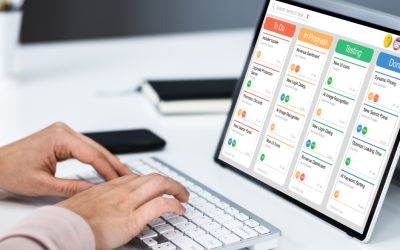In the world of app development, user authentication isn’t just about logging in. It’s also about trust, security, and a smooth user experience. So, whether you’re building a new SaaS platform, a mobile app, or an e-commerce solution, choosing the right identity provider (IdP) is one of the most critical decisions you’ll make.
A well-chosen identity provider ensures that users can sign up, log in, and manage their accounts securely and seamlessly. However, get it wrong, and you risk frustrated users, security breaches, and scalability headaches down the line.
So, what should you look for when picking an identity provider for your app? Let’s break down the essentials in this article!
1. Look for Developer-Friendly Integration
Even the most powerful identity provider can feel like a burden if it’s difficult to implement. Simply put, the right solution should simplify your workflow, not complicate it. Ease of integration is one of the biggest differentiators between providers. You should look for:
- Developer-friendly documentation,
- SDKs for your preferred programming languages, and
- Clear setup guides.
Good APIs are key. They should be intuitive, consistent, and flexible enough to support your unique use cases. As explained by a trusted platform, SuperTokens on identity providers, modern authentication systems should be designed to be both developer-friendly and customizable.
For a fact, SuperTokens itself offers open-source, customizable authentication solutions designed to integrate smoothly into your existing stack. Their developer-first approach gives you complete control over how authentication works in your app without forcing you into rigid vendor lock-in.
Ultimately, choosing an IdP that values developer experience doesn’t just save time; it reduces technical debt. The less friction you face during setup, the more time you can spend building the features your users actually care about.
2. Prioritize Security and Compliance
The foundation of any identity provider lies in security. These platforms manage sensitive user data, including:
- Passwords,
- Tokens, and
- Personal details.
Due to that, you should choose one that meets modern security standards and is non-negotiable. Look for providers that implement industry-leading encryption, multi-factor authentication (MFA), and robust password policies.
Moreover, compliance is equally important. Hence, ensure that your provider adheres to standards like GDPR, SOC 2, or ISO 27001, depending on where your users are located.
A good identity provider should also support OAuth 2.0, OpenID Connect, and SAML protocols. That, as a result, ensures secure communication between your app and authentication servers. These open standards make it easier to integrate identity solutions across multiple services while maintaining security and reliability.
In short, if security isn’t the core strength of your chosen provider, it’s a red flag. The right one should give both you and your users confidence that data privacy is a top priority.
3. Ensure Scalability and Performance
Your identity provider should grow with your app. As your user base expands, so will the demand on your authentication system. Providers that can’t handle scale can lead to longer login times, increased latency, or even downtime — all of which directly affect user trust.
Hence, before committing, consider how well the provider performs under load.
- Do they offer auto-scaling or global server distribution?
- Are there reports or benchmarks on uptime and response rates?
Ideally, your IdP should be built to handle thousands (or millions) of authentication requests without a hitch.
A common mistake developers make is choosing an identity provider that works fine during early stages but struggles when traffic spikes. Instead, think long-term — pick a solution that’s designed to handle the demands of high-performance applications from day one.
4. Focus on Customization and User Experience
Authentication shouldn’t feel like an obstacle — it should blend naturally into your app’s design and workflow. A good identity provider allows customization that fits your brand and enhances the user experience.
Features like social logins, passwordless authentication, or single sign-on (SSO) can make onboarding faster and smoother. These small details often have a big impact on retention, as users tend to prefer apps that make sign-ins effortless and secure.
Also, look for flexibility in UI components. Can you modify the login page to match your brand colors and layout? Can you control how users reset passwords or verify emails? For a fact, the more control you have, the more cohesive your user journey will feel.
Your identity provider should also provide strong session management tools to prevent unauthorized access and automatically handle token refreshes. This ensures users stay logged in safely while keeping your backend protected.
Conclusion to Draw!
Choosing the right identity provider isn’t just a technical decision — it’s a strategic one. The right partner ensures that your app remains secure, scalable, and user-friendly as it grows.
When evaluating your options, focus on four key areas: security, scalability, developer experience, and customization. These elements define how smoothly your authentication system runs and how confident your users feel logging in.





